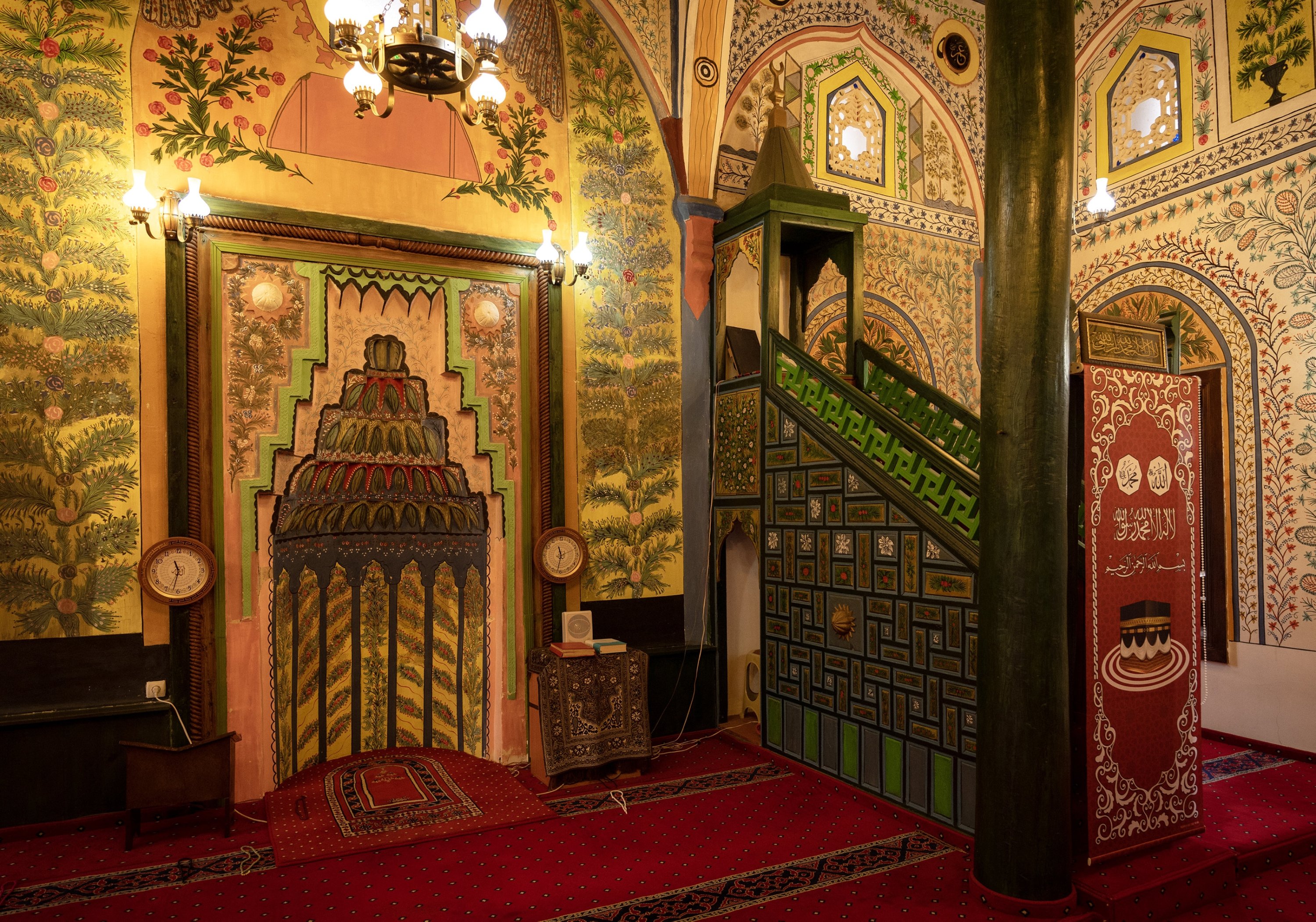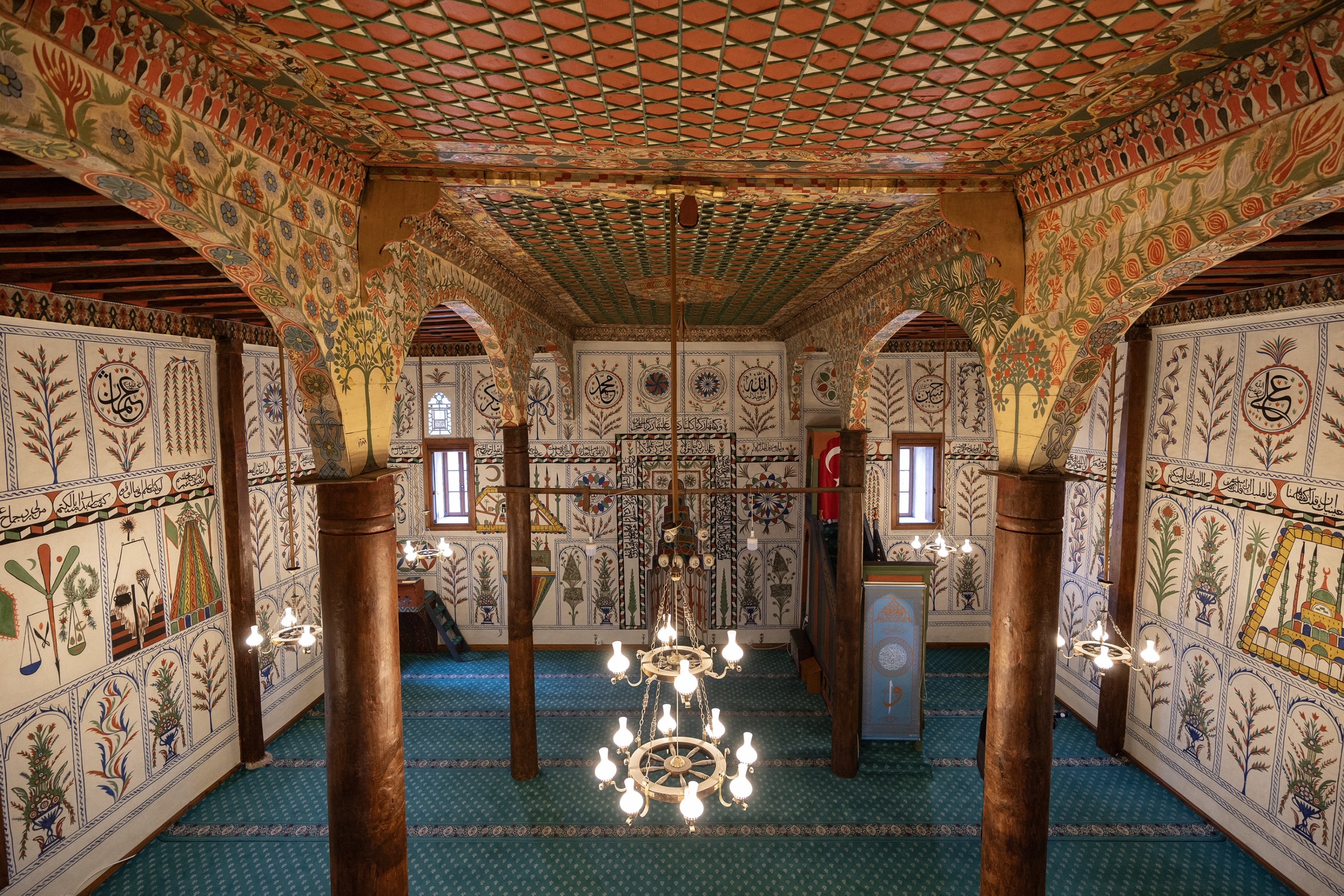© Turkuvaz Haberleşme ve Yayıncılık 2025
In western Türkiye's Denizli, historical mosques housing unique examples of Seljuk and Ottoman architecture continue to stand the test of time, adorned with penwork decorations and wall paintings created using natural dyes.
Among the city's important cultural assets are the 228-year-old Hacı Ömer Ağa Mosque in Acıpayam district, the 143-year-old Savranşah Mosque in Çivril district and the 254-year-old Boğaziçi Mosque in Baklan district.
These mosques, with their rich visual appeal, have survived through restoration efforts and have become popular destinations for visitors to the city. The penwork decorations and walls painted with natural dyes reflect the architectural richness and aesthetic values of their respective periods.
The Savranşah Mosque, built in 1882, features detailed penwork decorations on the mihrab and columns, while its wooden structure and colorful stained glass windows combine to add an aesthetic touch to the place of worship. Restoration work has strengthened the wooden elements of the mosque, and the decorations have been revitalized with original colors.

The mosque’s entrance door, pulpit, sermon platform and window shutters showcase rare examples of woodwork, while the penwork on the plaster depicts natural motifs.
Boğaziçi Mosque, built in 1771 in the Baklan district, stands out particularly for its penwork decorations on the ceiling, arches and pulpit. The wooden floral and geometric motifs are among the mosque's most striking features.

Hacı Ömer Ağa Mosque, located in Yazır neighborhood in Acıpayam and built in 1797, draws attention with flower, rose, tulip, carnation, grape, pear, apple, pomegranate and watermelon paintings created with natural dyes on its walls. The mosque is considered a continuation of the 13th-century Seljuk mosques, preserving all its original features and attracting numerous visitors both from Türkiye and abroad due to its distinctive decorations.
Hüdaverdi Otaklı, an official of Denizli's cultural heritage, told Anadolu Agency (AA) that penwork decoration has been practiced since the early Ottoman period. He explained that these works reflect the aesthetic values, tastes and embellishments of each period. Otaklı noted that, in addition to 15 registered historical mosques in the city, the number reaches 20 when smaller mosques are included.
He added that penwork, painted and embroidered decorations have been used in mosques since the Ottoman period, typically in smaller settlements rather than city centers. Otaklı also emphasized that the artisans who adorned the mosques sought to reflect the culture, art and way of life of the time.
"The paintings on the mosque walls depict themes related to justice, measurement, weights, jihad and war," Otaklı said. "Visual representations of the Kaaba and mosques have also been made. In fact, one of our mosques depicts a historical mosque in Istanbul, showing that the artisan must have seen that mosque in the late 1600s and reproduced it as a painting. We can also see heavenly and hellish fruits, as well as flowers in vases."
"These mosques are important in reflecting our culture and must be preserved. Every decoration has its own unique meaning. It is essential to preserve, promote and keep this invaluable heritage from the past alive," he said.
